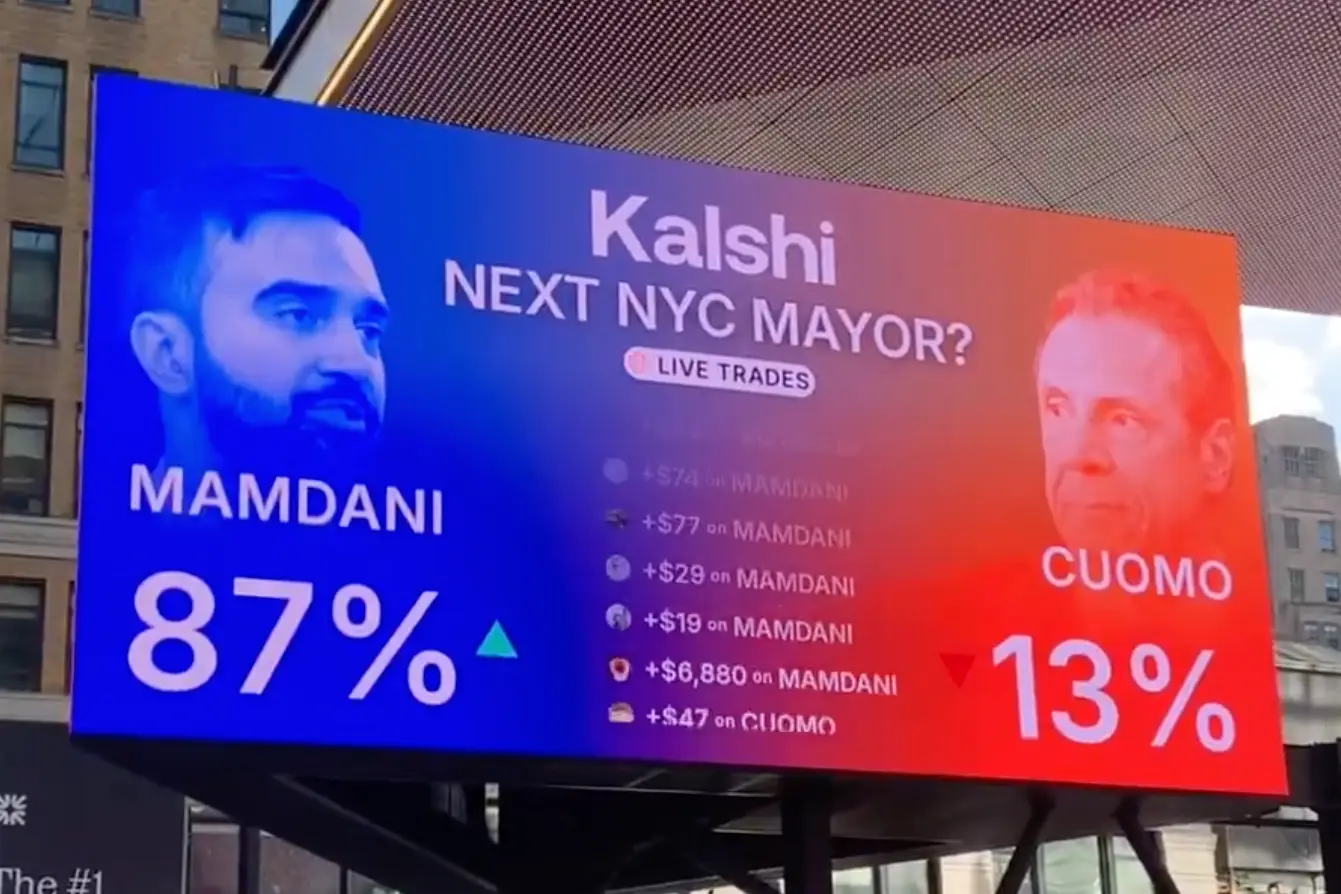Zohran Mamdani’s recent win in the New York City mayoral primary represents a striking upset against Democratic establishment candidate and former governor Andrew Cuomo, who until the final days before the election was a clear favorite. Major prediction exchanges such as Polymarket and Kalshi, which early in the campaign were pricing Mamdani at 8¢ for a “yes” contract, slowly ticked upward: 10¢, then 15, 20 and eventually, by Election Day, yes contracts hovered between 38-50¢.
What stories can we read from this data? The obvious one is that prediction markets eventually were able to pick up on the momentum of Mamdani’s campaign. And while not dead-on in predicting the winner of the NYC mayoral race, they were relatively effective lagging indicators of his rising chance of victory.
I think it may be useful to consider partially another possibility: Prediction markets around elections, like equity markets, are also reflexive.
Mamdani NYC primary victory illustrates reflexive markets
They create feedback loops. It wasn’t just that Mamdani gained momentum and prediction markets picked up on it, but also that the markets themselves became part of the momentum.
The great thing about markets compared to polls is that they are live.
They allow politicians and their followers to track their odds of success in real-time and adjust their strategy accordingly.
Good luck to both candidates next week! https://t.co/4cZ8u5BbaR
— Tarek Mansour (@mansourtarek_) June 21, 2025
Rising odds sparked more enthusiasm, more volunteering, more donations. Which in turn sparked more media coverage, more online chatter, more outreach. And all of that fed back into the markets, raising the odds again and again.
Feedback loops are not new in politics
This may sound farfetched, but reflexive positive-feedback loops are well documented in politics. In a 2013 research paper titled “The vicious cycle: fundraising and perceived visibility in US presidential primaries” researchers at Harvard used high-frequency FEC data on contributions and expenditures with Iowa Electronic Markets data on perceived probability of victory. In doing this they found “robust” evidence in support of feedback loops existing in political fundraising and electoral odds.
If prediction markets were a visible part of this feedback loop back in 2013, when they were still small-scale academic experiments, it’s more than plausible to me they’re part of it now with the rise of multi-billion-dollar, federally regulated derivatives exchanges.
If Mamdani’s win was reflexive, what could that tell us about the general election?
Mamdani’s odds at Kalshi now seem to be sustaining his growth as in spite of events that could hurt his campaign, his “yes” shares have crossed the 90¢ threshold. At this point, it would take a strong signal in Cuomo’s direction to move the markets back and create an inverse loop.
Adams’s exit barely registered, since he was already pulling only a sliver of support. But if Curtis Sliwa were to drop out, that could shift things. As of this writing, Sliwa has said he’s vehemently opposed to doing so.
How to incorporate reflexivity into your trading strategy
Reflexivity is often criticized for being too vague to model and too qualitative to measure. That’s why academics tend to see it as more philosophy than science. Despite the lack of replicability that renders it useless to researchers, it can be a cash cow for traders. George Soros himself, who coined the term “reflexivity” in financial markets, credits his ability to identify it as the primary force behind his success.
So, how can you implement reflexivity into a strategy if there’s no formula for it?
In practice, reflexivity means watching how markets talk to themselves and how that talk shapes behavior. This is especially true in thin or attention-sensitive markets like Kalshi, where price action can double as a signal.
Could rising odds on Bitcoin hitting $250K encourage more investors to hold or buy?
Could a market on the Fed cutting rates nudge consumer sentiment and eventually policy if it becomes visible enough?
Probably not yet. But as prediction markets grow in influence and volume, these kinds of feedback loops are worth watching especially in pop culture and election markets.
Listen for how shifting odds translate into political discourse and how that can shape public sentiment. Watch for moments when narrative momentum drives prices, and who is behind those shifts. Where the roles of market participants and groups or individuals impacting election outcomes overlap, there may be opportunity for traders.

























